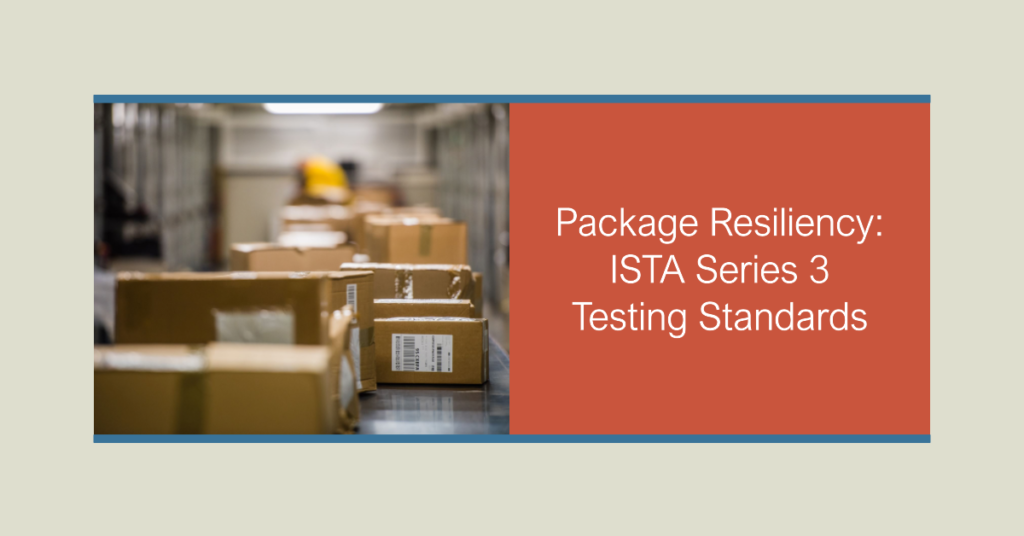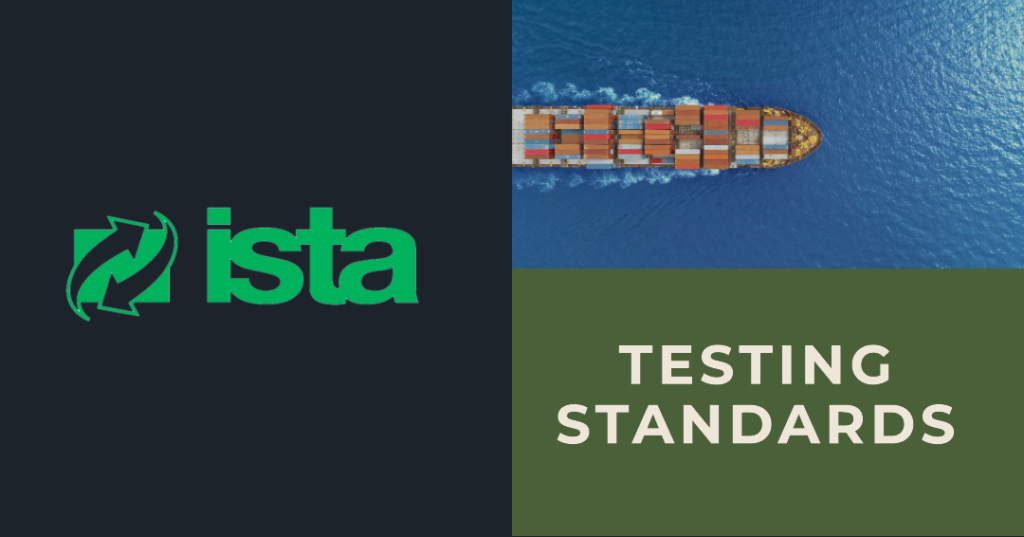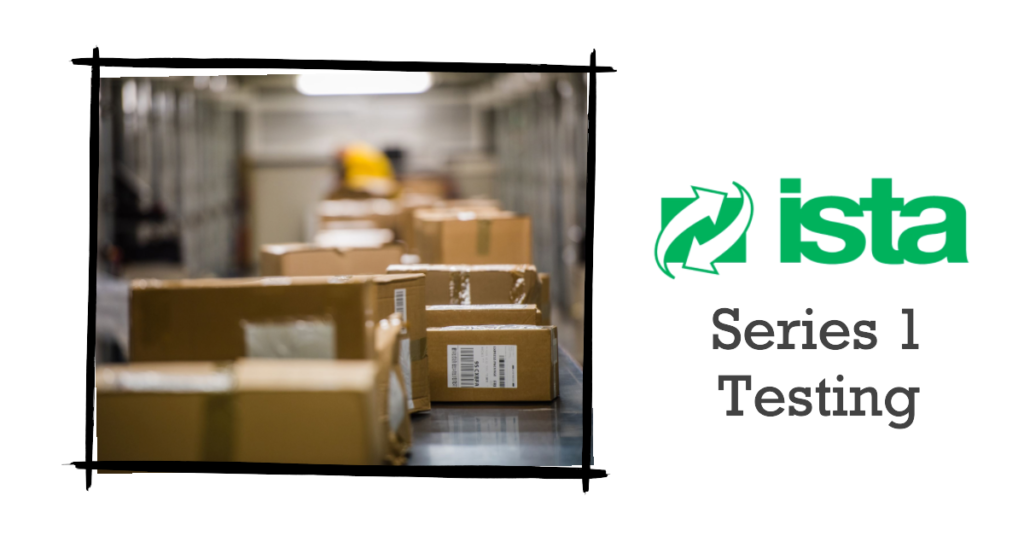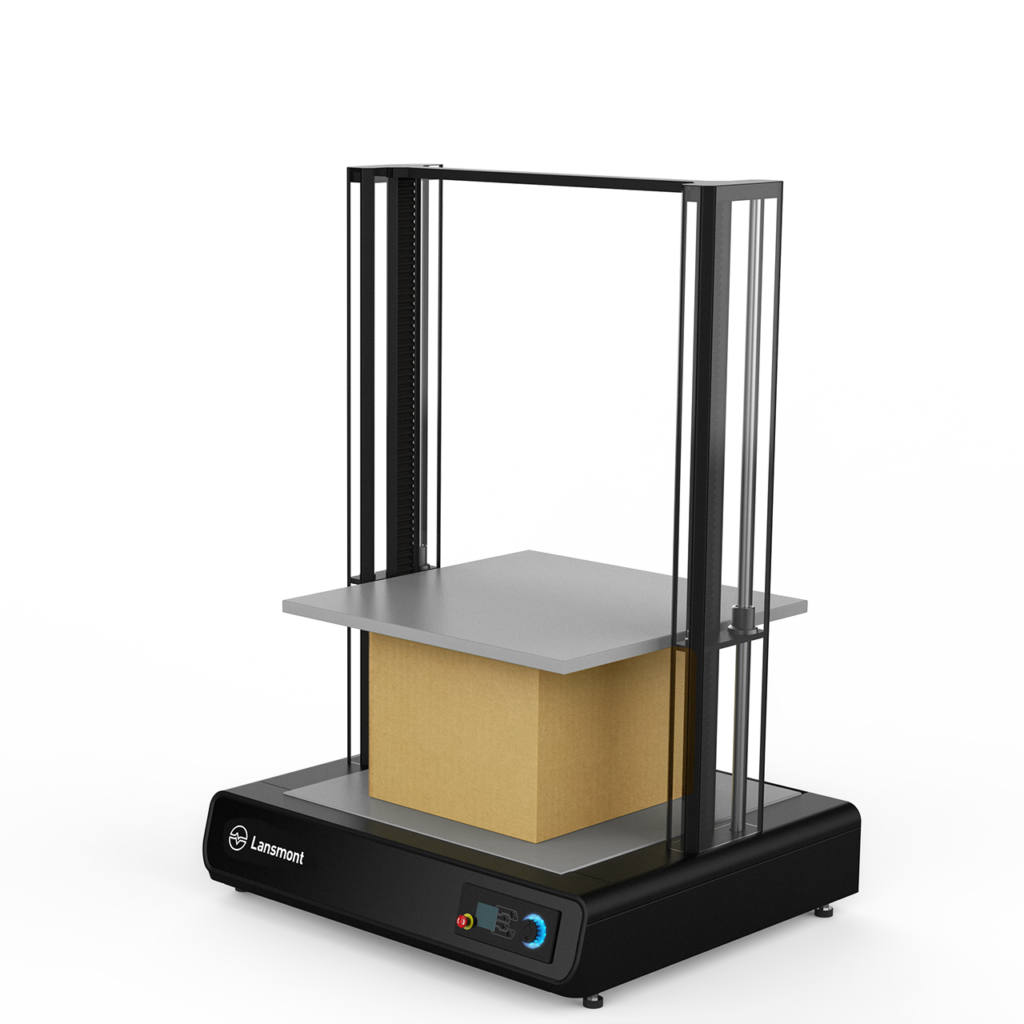
ISTA Series 3 Package Testing Standards
When it comes to shipping products, the safe arrival of your packages is of utmost importance. That’s why the ISTA 3-Series protocols are crucial. Designed as General Simulation Performance Tests, these ISTA standards evaluate the resilience of packages and products against transportation hazards encountered in parcel delivery systems. By subjecting packages to rigorous laboratory simulations that mirror real-world conditions, including random vibrations, package drops, and extreme climatic variations, the ISTA 3 tests provide invaluable insights into the ability of your packages to withstand the hazards encountered in parcel delivery systems.
Benefits of ISTA Series 3 Package Testing Standards:
- Unwavering Confidence: By adhering to ISTA Series 3 standards, you can be confident that your products will endure the rigors of handling and transportation.
- Mitigated Product Losses: Reducing claims of damaged products is crucial for your bottom line.
- Streamlined Operations and Increased Profits: Reducing product returns and associated costs has a direct impact on your profitability.
- Enhanced Customer Satisfaction: Ensuring that your customers receive intact and undamaged goods enhances their satisfaction, trust, and loyalty to your brand.]
- Material Evaluation and Innovation: ISTA Series 3 standards provide an opportunity to evaluate different packaging materials and their effectiveness in protecting your products.
ISTA 3 Series Tests:
The ISTA 3 series includes procedures (ISTA 3A and ISTA 3B):
- ISTA 3A: Parcel Delivery System Shipments 150 lb. (70kg) or Less
- Provides comprehensive testing for standard, small, flat, and elongated packaged products.
- Evaluates the ability of the packages to withstand drops, vibrations, and other hazards encountered during parcel shipping.
- ISTA 3B: Less-Than-Truckload (LTL) Shipment
- Assesses the performance of standard, cylindrical, and palletized or skidded packages during LTL transportation.
- Tests include tip/over, drop, vibration, impact, and other hazards encountered in LTL shipments.
ISTA 3A Testing: Ensuring the Resilience of Your Individual Packaged-Products
When it comes to shipping individually packaged products through a parcel delivery system, ISTA 3A testing is crucial. This comprehensive general simulation test evaluates the ability of your packages to withstand the rigors of transportation, especially when weighing 150 pounds or less. Within ISTA 3A, four distinct package type classifications exist Standard, Small, Flat, and Elongated.
Let’s explore each package type in detail:
- STANDARD Packaged-Products:
Standard packaged products encompass a wide range of packaging materials, including traditional fiberboard cartons, plastic containers, wooden crates, or cylindrical packages. These products do not meet the specific criteria for small, flat, or elongated packaged products. ISTA 3A testing ensures that standard packaged products can withstand the challenges of transportation and arrive intact at their destination. - SMALL Packaged Products:
Small packaged products are defined by specific size and weight criteria. They have a volume of less than 13,000 cm3 (800 in3), a longest dimension of 350mm (14in) or less, and a weight of 4.5kg (10lb) or less. ISTA 3A testing for small packaged products focuses on their ability to endure the various hazards encountered during shipping, ensuring their safe arrival. - FLAT Packaged Products:
Flat-packaged products, as the name suggests, have a distinctive shape and structure. They are characterized by the shortest dimension of 200mm (8in) or less, with the next longest dimension being at least four times larger than the shortest dimension. Additionally, the volume of flat packaged products measures 13,000 cm3 (800in3) or greater. ISTA 3A testing rigorously evaluates the durability of flat packaged products, considering their unique geometry and potential vulnerabilities during transportation. - ELONGATED Packaged Products:
Elongated packaged products possess a long, slender shape. They are identified by having the longest dimension of 900mm (36in) or greater, while both of the package’s other dimensions are each 20 percent or less of the longest dimension. ISTA 3A testing specifically focuses on the challenges faced by elongated packaged products during shipping, ensuring their resilience against hazards and maintaining the integrity of the package contents.
ISTA 3A testing requires that a specific test sequence be followed to achieve certification for each package type. The tables below outline the ISTA 3A testing required for package certification.
3A – STANDARD, ELONGATED & FLAT Packaged-Product Test Sequence
| Sequence | Test Category | Test Type | For ISTA Certification |
|---|---|---|---|
| 1 | Atmospheric Preconditioning | Laboratory ambient temperature and humidity | Required |
| 2 | Atmospheric Preconditioning | Controlled Temperature and Humidity in an environmental chamber | Optional |
| 3 | Shock | Package Drop Test 9 Drops – height varies with packaged-product weight | Required |
| 4 | Vibration | Random Vibration with & without Top Load | Required |
| 5 | Vibration | Random Vibration under a vacuum | Optional |
| 6 | Shock | Package Drop Test 8 Drops – height varies with packaged-product weight. Includes drop on hazard | Required |
| 7 | Shock | Rotational Edge Drop 200 mm (8 in) | Required for FLAT & ELONGATED |
| 8 | Shock | Full Rotational Flat Drop Varies with package dimensions | Required for FLAT & ELONGATED |
| 9 | Concentrated Impact | Hazard Box dropped 400 mm (16 in) | Required for FLAT Only |
| 10 | Bridge Impact | Hazard Box dropped 400 mm (16 in) | Required for ELONGATED Only |
| 11 | Integrity Leak Test | 8 Hours | Required for LIQUIDS Only |
3A – SMALL Packaged-Product Test Sequence
| Sequence | Test Category | Test Type | For ISTA Certification |
|---|---|---|---|
| 1 | Atmospheric Preconditioning | Laboratory ambient temperature and humidity | Required |
| 2 | Atmospheric Conditioning | Controlled Temperature and Humidity in an environmental chamber | Optional |
| 3 | Shock | Package Drop Test (not in a bag) 9 Drops – Height varies with packaged-product weight | Required |
| 4 | Vibration | Random Vibration with & without Top Load | Required |
| 5 | Vibration | Random Vibration under a vacuum | Optional |
| 6 | Shock | Package Drop Test (in a bag) 7 Drops – height varies with package-product weight | Required |
| 7 | Integrity Leak Test | 8 Hours | Required for LIQUIDS Only |
ISTA 3B: Safeguarding Your Packages in Less-Than-Truckload (LTL) Shipments
When it comes to packaged products transported through Less-Than-Truckload (LTL) shipments, ISTA 3B package testing plays a vital role. LTL shipments involve motor carriers (trucks) delivering various types of packaged products from different shippers, all destined for different ultimate destinations, but mixed together in the same load. This presents unique challenges that ISTA 3B testing addresses.
Within ISTA 3B, four distinct package type designations exist, each requiring specific testing protocols:
- STANDARD Packaged-Products (200 lb. or less):
This ISTA 3B category includes standard packaged products weighing 200 lb. (91 kg) or less. It encompasses a variety of packages, including elongated and flat packages. - STANDARD Packaged-Products (over 200 lb.):
Similar to the previous designation, this ISTA 3B category covers standard packaged products weighing over 200 lb. (91 kg). It includes elongated and flat packages, which require robust testing to withstand the challenges encountered in LTL shipments. - CYLINDRICAL Packaged-Products:
This ISTA 3B category focuses specifically on cylindrical packaged products, including elongated cylinders. - PALLETIZED or SKIDDED Packaged Products:
Palletized or skidded packaged products refer to individual containers, bulk containers, or unitized loads that incorporate a base allowing entry for fork trucks.
To achieve ISTA 3B certification for each package type, a specific test sequence must be followed. The tables below outline the required test sequence for ISTA 3B certification, ensuring that your packaged products meet the highest standards of durability and can withstand the rigors of LTL shipments.
3B – STANDARD 200lb or less Test Sequence
| Sequence | Test Category | Test Type | For ISTA Certification |
|---|---|---|---|
| 1 | Atmospheric Preconditioning | Laboratory ambient temperature and humidity | Required |
| 2 | Atmospheric Conditioning | Controlled Temperature and Humidity in an environmental chamber | Optional |
| 3 | Shock | Tip/Tip Over using a 22 degree tip angle | Required for packages ≥ 48 in (1.2m) tall and ≥100lb (45kg) weight and any base dimension < ½ the height, or for packages ≥ 30 in (760 mm) tall and with a center of gravity vertical location >½ the package height |
| 4 | Shock | Free Fall Drop Test 6 Drops – height varies with packaged-product weight | Required |
| 5 | Vertical Vibration | Random Vibration with Top Load | Required |
| 6 | Shock | Concentrated Impact | Required only for Non-Rigid Containers |
| 7 | Shock | Free Fall Drop Test 6 Drops – height varies with packaged-product weight | Required |
| 8 | Shock | 1 Full Rotational Drop | Required only for Elongated packages |
| 9 | Bridged Impact | Hazard Box dropped 410 mm (16 in) | Required only for Elongated packages |
| 10 | Shock | 2 Full Rotational Drops | Required only for Flat packages |
| 11 | Concentrated Edge Impact | Hazard Box dropped 410 mm (16 in) | Required only for Flat packages |
3B – STANDARD Over 200 lb. Test Sequence
| Sequence | Test Category | Test Type | For ISTA Certification |
|---|---|---|---|
| 1 | Atmospheric Preconditioning | Laboratory ambient temperature and humidity | Required |
| 2 | Atmospheric Conditioning | Controlled Temperature and Humidity in an environmental chamber | Optional |
| 3 | Shock | Tip/Tip Over using a 22 degree tip angle | Required for packages ≥ 48 in (1.2m) tall and ≥100lb (45kg) weight and any base dimension < ½ the height, or for packages ≥ 30 in (760 mm) tall and with a center of gravity vertical location >½ the package height |
| 4 | Shock | Rotational Edge and Corner Drops, 9 in (230 mm) | Required |
| 5 | Shock | Package Drop Test (3 in) or Inclined or Horizontal Impact (48 in/sec) | Required |
| 6 | Vertical Vibration | Random Vibration with Top Load | Required |
| 7 | Shock | Concentrated Impact | Required only for Non-Rigid Containers |
| 8 | Shock | Rotational Edge and Corner Drops, 9 in (230 mm) | Required |
| 9 | Shock | Package Drop Test (3 in) or Inclined or Horizontal Impact (48 in/sec) | Required |
| 10 | Shock | 1 Full Rotational Drop | Required only for Elongated packages |
| 11 | Bridged Impact | Hazard Box dropped 410 mm (16 in) | Required only for Elongated packages |
| 12 | Shock | 2 Full Rotational Drops | Required only for Flat packages |
| 13 | Concentrated Edge Impact | Hazard Box dropped 410 mm (16 in) | Required only for Flat packages |
3B – CYLINDRICAL Test Sequence
| Sequence | Test Category | Test Type | For ISTA Certification |
|---|---|---|---|
| 1 | Atmospheric Preconditioning | Laboratory ambient temperature and humidity | Required |
| 2 | Atmospheric Conditioning | Controlled Temperature and Humidity in an environmental chamber | Optional |
| 3 | Shock | Free Fall Drop Test 6 Drops – height varies with packaged-product weight | Required |
| 4 | Vertical Vibration | Random Vibration with & without Top Load | Required |
| 5 | Shock | Free Fall Drop Test 5 Drops – height varies with packaged-product weight | Required |
| 6 | Shock | Drop on Hazard 1 Drop – height varies with packaged-product weight | Required |
| 7 | Shock | 1 Full Rotational Drop | Required only for Elongated cylinders |
| 8 | Bridged Impact | Hazard Box dropped 410 mm (16 in) | Required only for Elongated cylinders |
3B – PALLETIZED OR SKIDDED Test Sequence
| Sequence | Test Category | Test Type | For ISTA Certification |
|---|---|---|---|
| 1 | Atmospheric Preconditioning | Laboratory ambient temperature and humidity | Required |
| 2 | Atmospheric Conditioning | Controlled Temperature and Humidity in an environmental chamber | Optional |
| 3 | Shock | Tip/Tip Over using 22 degree tip angle | Required for palletized or skidded loads ≥ 30 in (760 mm) tall and with a center of gravity vertical height > the smallest base dimension |
| 4 | Shock | Rotational Edge and Corner Drops, height varies with packaged-product weight | Required |
| 5 | Shock | Package Drop Test (3 in) or Inclined or Horizontal Impacts (48 in/sec) | Required |
| 6 | Vertical Vibration | Random Vibration with Top Load | Required |
| 7 | Shock | Concentrated Impact | Required only for Non-Rigid Containers |
| 8 | Shock | Forklift Handling Flat Push and Rotate Tests | Required |
| 9 | Shock | Forklift Handling Flat Push and Rotate Tests | Required |
| 10 | Shock | Forklift Handling Elevated Rotate Tests | Required |
| 11 | Shock | Forklift Handling Load Stability Test over a handling course | Required |
| 12 | Shock | Rotational Edge and Corner Drops, height varies with packaged-product weight | Required |
| 13 | Shock | Package Drop Test (3 in) or Inclined or Horizontal Impacts (48 in/sec) | Required |
Investing in the Future: Exploring Package Innovation through ISTA 3A Testing
DES is a leading provider of comprehensive package testing services to a wide range of industries, including medical devices, electronics, automotive, and aerospace. With our state-of-the-art, environmentally controlled, and accredited laboratory, we offer reliable and accurate testing that adheres to the stringent standards set by the International Safe Transit Association (ISTA) including ISTA 3A and ISTA 3B standards.
By choosing DES for all of y our ISTA package testing needs (including ISTA 3A and ISTA 3B) you gain access to:
- Expertise Across Industries: We have extensive experience working with diverse industries, enabling us to tailor our testing approaches to meet your specific requirements and regulatory standards.
- Comprehensive Testing Solutions: Our range of package testing services covers a wide array of tests and simulations, including ISTA protocols, to assess the resilience of your packages against various transportation hazards.
- Rigorous Compliance: Our laboratory strictly adheres to ISTA packaging standards, ensuring that your products are tested in accordance with the industry’s best practices and guidelines.
- Accurate and Reliable Results: We employ cutting-edge equipment and employ robust testing methodologies to provide precise and trustworthy results. You can have confidence in the accuracy of our testing and make informed decisions based on the outcomes.
Contact DES today to discuss your package testing requirements and leverage our expertise to ensure the integrity and reliability of your products.


